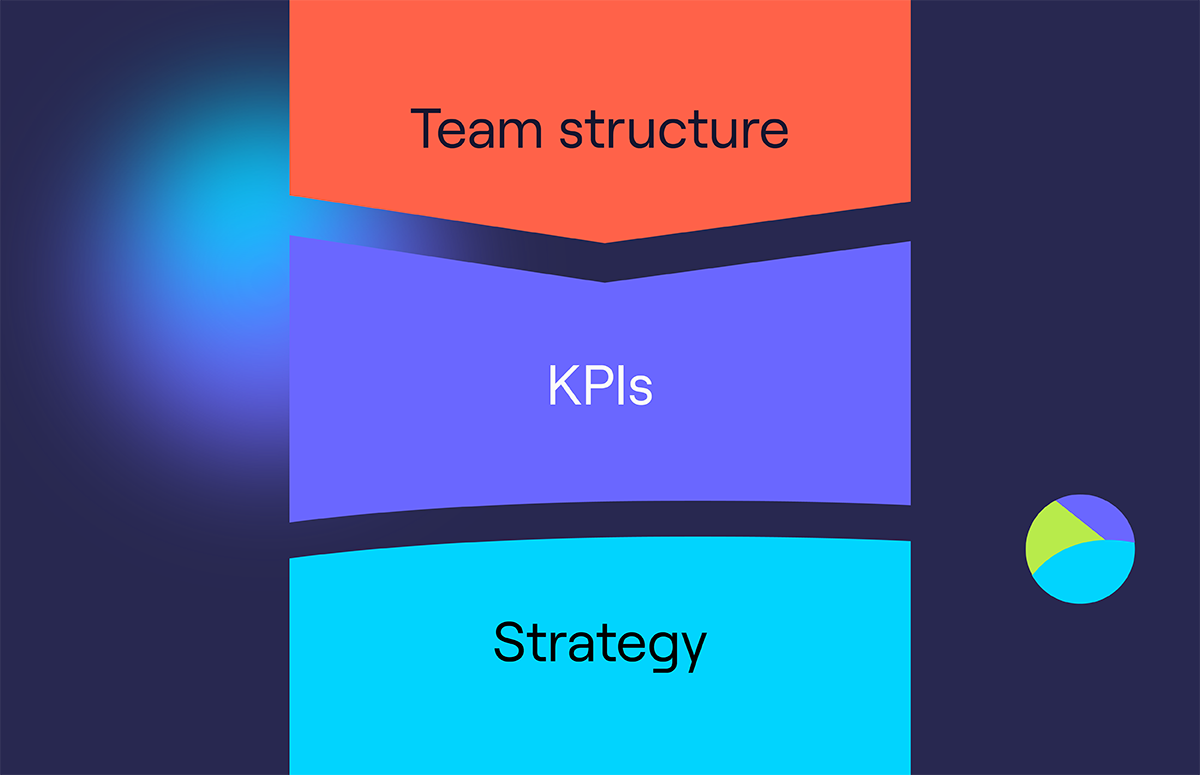What is a Sales Qualified Lead (SQL)? Definition and Tips
SQL FAQs:
Tired of your reps wasting time on the wrong leads?
You’re not alone. In B2B sales, the difference between hitting target and missing it often comes down to how well your team qualifies leads.
That’s where sales-qualified leads (SQLs) come in. They’re the leads that show clear buying intent and meet the criteria your sales team cares about: right company, right contact, right timing.
In this blog, we’ll explain what a sales-qualified lead is, how to define SQL criteria that align with your pipeline goals, and how to coach your team to spot and prioritise them.
Because when your reps focus on the right leads, your forecast gets tighter - and your close rate goes up.
What is a sales-qualified lead?
A sales-qualified lead (SQL) is more than just a name in your CRM; it’s a prospect who’s ready to talk business.
They’ve shown real buying intent. Maybe they downloaded a high-intent content offer, visited your pricing page, or engaged with your brand multiple times. They’ve passed the initial marketing checks and are primed for sales outreach.
Now it’s your team’s job to dig deeper:
- Do they have budget?
- Are they the decision-maker?
- Is there a clear use case?
Every sales org defines SQLs differently (based on deal size, cycle length, or historical data), but the fundamentals stay the same:
They’re interested, and they’re likely to buy.
Getting this right matters. Without a clear SQL definition, reps chase the wrong leads and waste time on deals that were never going to close.
How can you find and convert sales-qualified leads?
You don’t need more leads.
You need the right ones: qualified, ready to buy, and aligned with your ICP.
Here’s how to consistently generate and convert SQLs without sacrificing lead quality.
1. Build a high-quality sales lead list
Never use spray-and-pray lead lists; they burn up rep time and destroy conversion rates.
Use a B2B data provider like Cognism to help you build compliant, high-converting lead lists.
It gives your sales team access to:
- Precision targeting filters: Drill down by job title, seniority, department, company size, industry, revenue, tech stack, and more so that every contact matches your ICP.
- Verified contact data: Get access to human-verified mobile numbers, direct dials, and email addresses. No more wasting time on bounced emails or dead numbers.
- Intent data integration: Prioritise leads actively researching your solution or category so your reps call the right people at the right time.
- Global, GDPR-compliant coverage: Cognism is one of the few providers that’s fully GDPR and CCPA compliant, making it safe for global prospecting.
- AI-powered prospecting: Use Cognism’s AI search to surface high-fit leads you may not have considered.
With Cognism, your team will spend less time chasing the wrong people and more time speaking with qualified buyers who are likely to convert.
Take an interactive tour 👇
2. Prioritise conversations over clicks
Got a lead asking about a feature?
Don’t just send them a link to a product page. Pick up the phone or hop on a quick demo call.
Why it works:
It builds rapport, shows you’re invested, and lets you tailor your pitch in real time. This should move them further down the funnel, faster.
3. Maximise visibility in B2B directories
Get listed on high-traffic platforms like G2, Capterra, or SaaSGenius.
Add compelling product descriptions, customer reviews, and calls to action.
Why it works:
Buyers trust third-party validation. When you’re visible on comparison sites, SQLs come to you already interested.
4. Warm up your cold calls
Cold calling still works when it’s done right.
Use intent data and company insights to tailor call scripts to your prospects’ needs.
Why it works:
Personalised calls that focus on customer pain points and KPIs will earn you more phone time and more booked meetings.
5. Personalise your outbound emails
Avoid cookie-cutter outreach.
Go beyond “Hi (FirstName)” - instead, reference specific pain points, job roles, or recent activity.
Tactics to try:
- Mention relevant LinkedIn activity.
- Reference a challenge tied to the lead’s industry.
- Include a short, punchy CTA (e.g. “Worth a 5-min chat?”).
Why it works:
Better personalisation = higher response rates, better quality conversations, and more SQLs.
6. Use live chat to catch SQLs in the moment
Add a live chat tool to high-intent pages like pricing, product, or demo pages.
Program it with routing logic to send qualified leads directly to your sales team.
Why it works:
When prospects engage on-site, they’re warm. Capturing them in that moment massively increases the likelihood of sales conversion.
7. Turn email signatures into lead-gen real estate
Use email signature marketing tools to promote CTAs in every email your team sends.
Example CTAs:
- “Get our latest B2B prospecting guide”
- “Book a personalised demo”
- “See Cognism in action”
Why it works:
It’s passive, scalable, and taps into the thousands of emails your team sends daily.
8. Go all-in on LinkedIn
If your reps are consistent and visible, LinkedIn is an SQL goldmine.
Get them posting thought leadership, commenting on ICP posts, and building relationships.
Why it works:
People buy from people. LinkedIn prospecting builds trust, increases brand visibility, and gets your solution in front of the right people, without it feeling too sales-y.
9. Use paid ads to drive action
Run simple, high-converting ads on B2B’s most popular social media channels: LinkedIn, Facebook, and Google.
Ensure the ads direct to high-intent landing pages.
Ad types that work:
- Demo request ads.
- Comparison of your product vs. a competitor.
- Pain-point-focused lead magnets.
Why it works:
It brings targeted traffic and SQLs straight to your funnel.
10. Automate outbound nurture
Use email automation to keep SQLs warm until they’re ready to buy.
Segment the emails by persona, funnel stage, or lead behaviour.
Items to include:
- Case studies and customer quotes.
- ROI stats.
- Webinar invites.
- Product/feature updates.
Why it works:
It’s scalable, personalised, and ensures no warm lead gets forgotten.
11. Get more reviews from happy customers
Ask your top users to review you on G2, Capterra, or Trustpilot.
Focus on high-NPS users and offer incentives, if needed.
Why it works:
B2B buyers often read reviews before shortlisting vendors. Remember that social proof drives pipeline.
12. Run high-intent Google Ads
Bid on bottom-of-funnel keywords. Here are some Cognism examples:
- “Best B2B lead generation tools”
- “Cognism vs ZoomInfo”
- “Verified B2B contact data UK”
Also, use retargeting ads to revive lost prospects.
Why it works:
You capture SQLs when they’re most interested in buying.
13. Optimise for SEO
Target long-tail, high-intent keywords with blog posts, landing pages, and comparison pages.
Include strong CTAs and forms for lead capture.
Why it works:
Buyers who land on SEO content with the intent to buy are an easy SQL win.
14. Use content marketing to build trust
Newsletters, whitepapers, product one-pagers, they’re all useful for converting SQLs.
But don’t use them just to highlight product features; instead, provide value by showing how your product solves real-life problems.
Why it works:
Educated buyers move through the funnel faster and close at a higher rate.
15. Steal leads from your competitors
Monitor social media and review sites for unhappy competitor customers.
When you spot dissatisfaction, jump in with a tailored message, such as offering a demo or free data sample.
Why it works:
These SQLs are in-market and actively looking to switch. You just need to get in there first!
How do you determine a sales-qualified lead?
At Cognism, we use the BANT framework to determine whether a lead is genuinely sales-ready. It stands for Budget, Authority, Need, Timeline.
Here’s how to apply it in real-world sales conversations 👇
Budget: Can they actually buy?
A prospect might love your product, but if they can’t afford it, the deal’s dead on arrival.
Sales manager tip:
If you want to shorten sales cycles and boost conversions, don’t shy away from money talk.
Ask them early if they’re comfortable with your pricing. If they’re not, there’s no point in planning implementation or timelines.
Authority: Are you speaking to the right person?
User interest is worthless if it comes from someone with no buying power.
Sales manager tip:
Deciding SQLs isn’t single-threaded. Get your reps to engage multiple stakeholders in a business and understand who really drives decisions.
Use your ideal customer profile to guide targeting; aim for seniority, but don’t ignore influential champions.
Need: Do they have a problem you can solve?
Selling to bad-fit prospects leads to higher churn rates and a frustrated CS team.
Sales manager tip:
SQLs should clearly state that solving this problem is their top priority.
If they don’t need you, it’s okay to walk away.
Timeline: Will this deal close this quarter or next year?
Endless deal cycles tank your forecast and clog your sales pipeline.
Sales manager tip:
Prioritise prospects looking to buy this quarter.
Always ask about timelines - if there’s no urgency, there’s no real need.
What are the best qualifying questions to ask?
If your reps aren’t asking the right questions, they’re not qualifying, they’re guessing.
The best sales teams don’t just go through the motions. They use structured discovery calls to verify fit, uncover urgency, and move SQLs to the close.
Here are seven high-impact questions your team should be asking to separate real opportunities from time-wasters 👇
“What’s your role and responsibility at the company?”
This isn’t just small talk.
It’s how your reps gauge influence and authority. Are they speaking to the decision-maker, a budget-holder, or a blocker?
Coach your reps to listen for cues about the wider buying committee. B2B decisions are rarely made alone.
“What challenges are you currently trying to solve?”
This is where qualification turns into value-selling.
Reps should use this question to surface pain points, position your solution as the fix, and even introduce problems the buyer didn’t know they had.
Thorough discovery means fewer sales objections later.
“What made you consider our solution?”
This reveals more than brand awareness. It tells you what triggered their interest, such as a pain, an event, or a competitor gap.
Train your reps to use this question as a jumping-off point for tailored messaging and objection handling.
“What’s your budget, and how do you typically allocate it?”
If they can’t buy, it’s not a real opportunity.
This question helps your team assess fit fast and disqualify when necessary.
Encourage your reps to ask confidently. Budget conversations shouldn’t come at the end - they belong at the start of the sales process, in discovery.
“Have you looked at other vendors? What did you like or dislike?”
This question is perfect for competitive intel.
It tells you who else is in the mix, what they value, and where you can differentiate.
Use the prospect’s feedback to flip competitor weaknesses into your strengths. Like this:
Prospect:
“We’ve been trialling ZoomInfo, but it’s been tough getting through to the right people. A lot of the mobile numbers are either wrong or outdated.”
Rep:
“That’s something we hear a lot. One key difference with Cognism is that our mobile numbers are manually verified, not scraped or guessed from public data. So when your reps hit dial, they’re far more likely to reach decision-makers. It’s why teams that switch to us see a big lift in connect rates and meetings booked.”
“What’s your ideal timeline for implementation?”
Urgency drives pipeline velocity.
If there isn’t a concrete timeline, or the prospect gives you a vague “maybe next year”, you’ve got a nurture lead, not an SQL.
Prioritise deals with a clear driver behind the timeline, whether it’s budget cycles, contract renewals, or internal deadlines.
“How do you like to communicate during the sales process?”
It sounds minor, but this question is a fast trust-builder.
Some prospects want weekly calls. Others prefer Slack or email. Meeting them where they are improves engagement and shows you’re easy to work with.
Coach your team to match their tone, cadence, and sales channel to the buyer’s preferences.
What should you do after qualifying a sales lead?
So your rep has qualified the lead. Great! But now what?
B2B sales isn’t just about identifying the right buyers. It’s about moving them through the sales funnel with intent and precision.
That means knowing which leads to prioritise, which to park, and how to build a repeatable engine behind it all.
At Cognism, we’ve built that engine with lead scoring.
Here’s how it works:
- Once a lead is marked as sales-qualified, we assign them a score based on fit and behaviour.
- High scorers move straight into active sales sequences.
- Low scorers go into lead nurturing campaigns until they’re ready to re-engage.
This lead scoring system helps our reps focus on the leads most likely to convert, while still keeping long-term prospects warm.
When should a previously disqualified lead be re-qualified?
Keep an eye out for the customer behaviour data that shows renewed intent:
- They reply to a cold email with product-specific questions.
- They contact your sales team directly via email or your website.
- They register for a bottom-of-funnel (BOFU) webinar or live event.
- They revisit high-intent pages like your pricing or product page multiple times.
- They arrive on your site via a referral source known to generate SQLs.
These are strong signs that the lead is warming up again and might be ready for a conversation.
Sales manager tip:
Build your lead scoring model around intent signals your team can act on. And make sure reps know when to escalate a lead vs. when to pass it back to nurture.
Turn signals into sales 👉 Get a Cognism data sample
What are MQLs and SALs in relation to SQLs?
If your pipeline’s full but revenue’s slow, this is the section you need.
Qualifying leads isn’t a one-step job. It’s a progression that starts with the marketing department, moves through sales acceptance, and ends with sales qualification.
When done right, it creates a clean handoff between teams and a pipeline full of genuine opportunities.
When done wrong? Sales gets stuck chasing leads that were never going to convert.
Here’s how the stages break down 👇
Marketing-Qualified Lead (MQL)
This is where the process starts.
Someone downloads a whitepaper, fills out a form, or clicks through a nurture campaign.
Your marketing team reviews their activity and says, “This person looks like a potential customer.”
Typical MQL signals:
- Visits to key web pages.
- Form submissions.
- Content downloads.
- Ad engagement.
Marketing-qualified leads are important, but they’re not sales-ready yet.
Sales-Accepted Lead (SAL)
Before jumping straight into outreach, some companies add a SAL stage, which involves a lead acceptance check.
This is a filter to ensure that MQLs conform to your ICP or buyer personas (e.g. job title, company size, industry) before they hit the sales team’s queue.
It’s a useful stage because it can prevent sales and marketing misalignment.
Sales-Qualified Lead (SQL)
Now we’re talking!
These are the leads that show concrete buying intent and pass your internal qualification process (like BANT or MEDDIC). When an MQL or SAL passes, you can upgrade them to SQL.
Whether you’ve got SDRs qualifying leads or a full-stack AE model, the goal is the same:
Prioritise the prospects most likely to close.
Identifying SQLs: The last word
Without a clear identification process, your sales team wastes time on low-quality leads.
The tips in this blog will help you define that process - MQL to SAL to SQL - and move leads from interest to intent.
But even the best framework needs the right data - and that’s where Cognism comes in.
Using our data and tools, you can build SQL lists that match your ICP, with every prospect in-market and ready to buy.
Ready to start identifying the right sales-qualified leads? Click 👇 to get your free data sample.
/CTAs%20(SEO)/EN_high-intent-cta-banners-data-sample-webp.webp?width=1376&height=528&name=EN_high-intent-cta-banners-data-sample-webp.webp)


